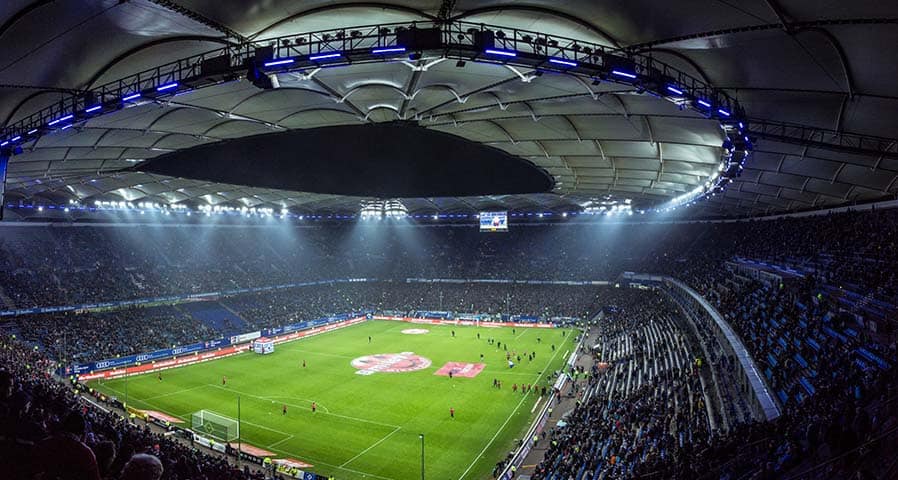Comparing the energy consumption between LED and traditional lighting
Comparing the energy consumption between LED and traditional lighting for stadiums involves examining several key factors. Here are some of the main points of comparison:
1. Energy Efficiency
· LED Lighting: LEDs (Light Emitting Diodes) are highly energy-efficient, converting about 90-95% of the energy they consume into light and only 5-10% into heat. This results in significant energy savings.
· Traditional Lighting: Traditional lighting options such as metal halide and high-pressure sodium lamps are less efficient, converting only about 50-70% of the energy into light, with the remainder lost as heat.
2. Luminous Efficacy
· LED Lighting: LEDs have a higher luminous efficacy, meaning they produce more lumens per watt of electricity consumed. LEDs can produce 130-160LM/W or even higher with advanced models.
· Traditional Lighting: Metal halide lamps produce around 70-100 lumens per watt, and high-pressure sodium lamps range from 50-150 lumens per watt. However, their light quality and color rendering are generally inferior to LEDs. And even 150LM/W (by machine testing) will be less lighting effect comparing with 120-130LM/W led lamps (by machine testing) because central light intensity and visible light are weaker than LED lamps.
3. Lifespan and Maintenance
· LED Lighting: LEDs have a much longer lifespan, typically lasting between 50,000 to 100,000 hours. This reduces the frequency of replacements and maintenance, leading to further energy savings in terms of manufacturing and transportation.
· Traditional Lighting: Metal halide and high-pressure sodium lamps have shorter lifespans, ranging from 15,000 to 30,000 hours, requiring more frequent replacements and higher maintenance costs.
4. Heat Emission
· LED Lighting: LEDs emit very little heat, which helps reduce the load on cooling systems in the stadium. Lower heat emissions also improve the overall safety and comfort for players and spectators.
· Traditional Lighting: Traditional lights emit a significant amount of heat, contributing to higher cooling costs and creating potentially uncomfortable conditions in the stadium.
5. Instant On/Off
· LED Lighting: LEDs provide instant illumination when switched on, without the need for warm-up time. This feature is energy-efficient, especially in situations requiring frequent switching.
· Traditional Lighting: Traditional lights often require a warm-up period to reach full brightness, consuming more energy during this time and leading to inefficiencies.
6. Directional Lighting
· LED Lighting: LEDs offer better directional lighting, meaning they can focus light exactly where it's needed, reducing light spill and wastage.
· Traditional Lighting: Traditional lighting often requires reflectors to direct light, which can lead to inefficiencies and more energy consumption to achieve the same lighting levels.
7. Environmental Impact
· LED Lighting: LEDs contain no hazardous materials like mercury, making them safer for the environment and easier to dispose of. Their energy efficiency also translates to lower greenhouse gas emissions.
· Traditional Lighting: Many traditional lights contain harmful substances such as mercury, which can be hazardous to the environment. Their higher energy consumption also contributes to greater carbon emissions.
Case Study Example
A practical example can be seen in major stadiums that have made the switch to LED lighting. For instance, the U.S. Bank Stadium, home to the Minnesota Vikings, reported a reduction in energy usage by up to 75% after switching to LED lighting. This significant drop in energy consumption translates to both cost savings and a reduced environmental impact.
Conclusion
Switching from traditional lighting to LED stadium lights offers substantial benefits in terms of energy efficiency, cost savings, reduced maintenance, and environmental impact. LEDs provide higher luminous efficacy, lower heat emissions, and longer lifespans, making them the superior choice for modern stadium lighting.


